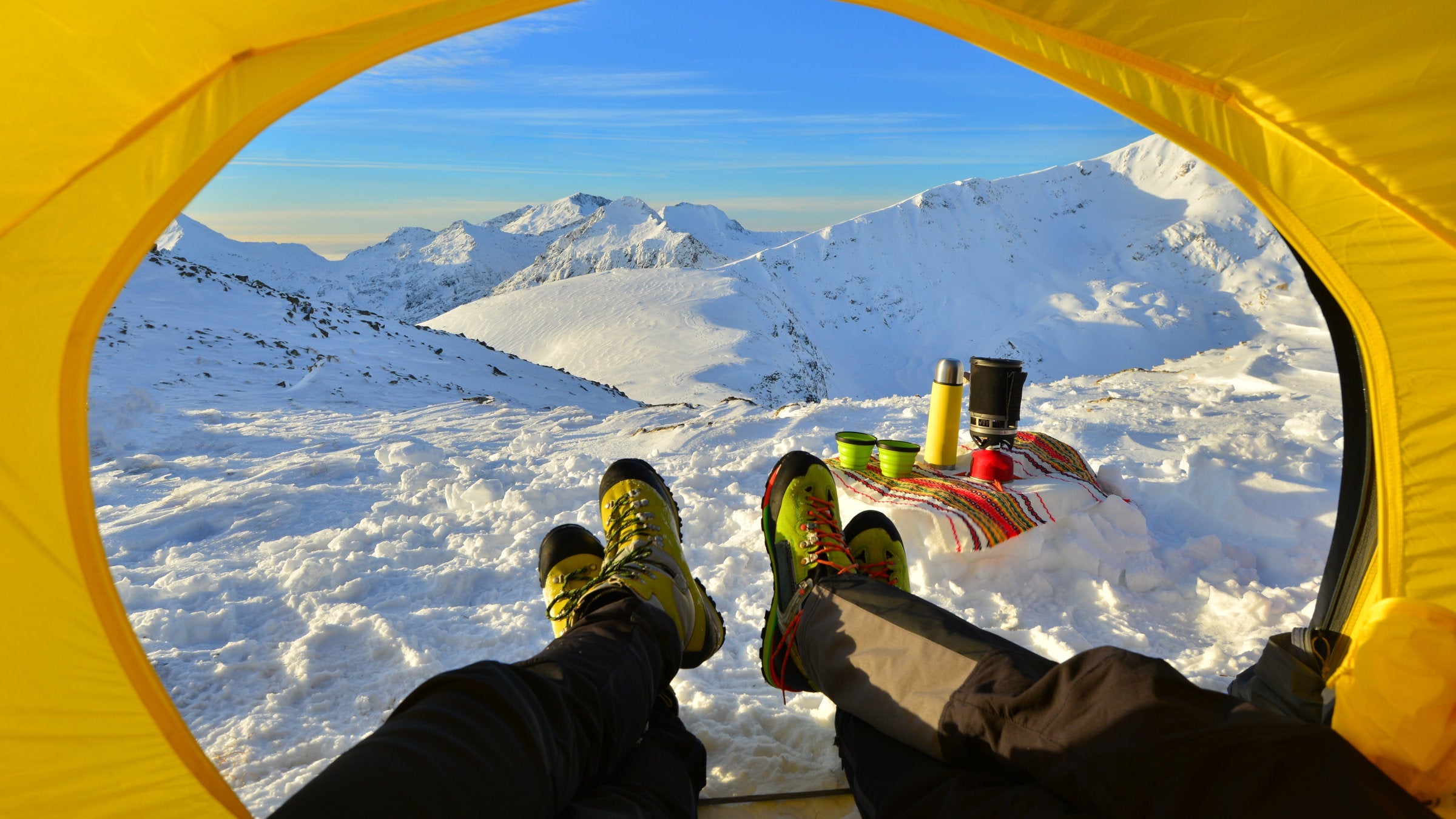Backpacking in winter takes practice. Between , , and frozen water bottles, a successful winter outing does come with a learning curve. But embarking on a cold-weather trip doesnтАЩt mean you need to throw out everything youтАЩve learned (or all the gear youтАЩve accumulated) for fair-weather backpacking. To help you plan your nextтАФor firstтАФwinter trip, weтАЩre separating truth and fiction in four common cold-weather backpacking tips.
Myth: You need a dedicated winter sleeping pad.
Verdict: False
LetтАЩs be clear, itтАЩs absolutely true that you need more insulation underneath your body when youтАЩre camping in the winter. But that doesnтАЩt necessarily mean you need to go out and buy an expensive sleeping pad that youтАЩll only use a few times each year. comes down to a number known as R-value, which tracks how well a pad resists heat loss. In the summer, an R-value of 2 can keep you comfy, but most people will want to boost that number above 5 in the winter. Yes, one way to do that is to buy a winter pad, which often have reflective surfaces or insulation packed inside to trap your body heat. But you can also just stack two pads on top of each other. Calculating the R-value of two pads is simpleтАФjust add the numbers together. If you already have a pad with an R-value of 3, adding a foam pad with an R-value of 2 will get you to 5, and that supplemental foam pad will be a lot cheaper than buying a specialized winter pad.┬а
Myth: Canister stoves donтАЩt work in the winter.
Verdict: Partly True
It is true that , but the temperature has to get pretty icy before your JetBoil stops boiling. If the mercury hovers around 20 or 30 degrees, youтАЩll probably be fine. But if it dips below 11 degrees for an extended period of time, youтАЩll likely be in trouble. HereтАЩs why: canister fuels like butane, isobutane, and propane rely on vapor pressure to deliver fuel to the stove. As temperatures drop, these fuels begin to fall below their boiling points and turn from gas to liquid. Without those fuel gases, your stove stops working. Each fuel has a different boiling point. ButaneтАЩs is at 31 degrees Fahrenheit, which is why older fuel canisters were truly awful in any temps below freezing. Isobutane, which is in modern canisters, boils at 11 degrees. Finally, propane is good down to -44 degrees, which is why тАЬall-seasonтАЭ canisters often include 25 percent propaneтАФit drops the boiling point and gives you some extra cold-weather usability.┬а
ItтАЩs worth noting a few things. First, if you flip over a fuel canister, it can deliver liquid gas to a stoveтАФbut youтАЩll need a camp stove thatтАЩs designed for that specific use. Secondly, while the temperatures above are a good guideline, canister stove performance isnтАЩt simply good or bad. Instead, it continues to decrease as temperatures get colder. So even if you donтАЩt hit that dreaded-11 degree mark, your stove will be less efficient in temperatures in the teens. Our advice? If you have one or two quick trips planned this winter, it might be worth trying to make a canister stove work using all-season fuel. For more serious endevors like melting snow or cooking for a group, a white gas stove is a better option.┬а
Myth: Thicker socks are just as good as insulated boots.
Verdict: False
Keeping your feetтАФand the rest of your body, for that matterтАФwarm in winter is . Ideally, that means that both your socks and your footwear are contributing warmth and comfort. Wearing two pairs of socks is great, but if youтАЩre still slipping into a pair of mostly mesh trail runners, you can probably count on cold feet. Wearing a single set of merino socks in an insulated leather boot will almost certainly be warmer. Another thing to keep in mind is sizing: Just like any form of insulation, socks and boots will work best when thereтАЩs space to trap air. If you pull on two pairs of thick socks and cram your feet into a pair of shoes or boots that you normally wear in the summer, the tight fit will almost certainly equal cold feet due to a combination of squashed insulation and lack of circulation.
To truly stay warm, make sure your entire footwear system is working together. Wear one or two pairs of socks (one thin pair under a thicker wool sock is a good wicking combo) and a pair of boots with some wiggle room, and consider extras like a wool insole and wind-blocking gaiters.┬а
Myth: You donтАЩt really need a pee bottle.
Verdict: Maybe, maybe not.┬а
The real myth here is that itтАЩs a good idea to hold your pee when youтАЩre camping in the winter. The opposite is actually true. A full bladder might sound warm, but is redirecting energy that could be heating you┬а instead. That means the best thing to do during a cold night in your tent is to relieve yourself as soon as you get the urge. If youтАЩre happy to get out of the tent to go pee, more power to you (another myth to debunk: a few minutes outside of your sleeping bag will not affect your body temperature much, even if it feels uncomfortable). But for many people, making the process easier means youтАЩll be less likely to lie to yourself about how bad you have to go. A pee bottleтАФparticularly one with a sturdy screw topтАФin the tent is totally valid. In addition, a pee funnel can make it possible for anyone to pee while standing or kneeling, and improves your aim to boot. If that sounds like something that would make winter camping easier and more comfortable, give it a shot


